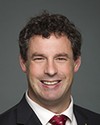It's not additional funding; it's funding for the ongoing work. Within it, you now have a pilot and then they will decide, with their regular funding, whether or not they would dedicate additional dollars toward this pilot. That raises a significant issue.
We heard from other witnesses for the Atlantic provinces study that there was a lack of supports in place for existing resettlement services for the existing community. Then, in order to attract and to retain people, they needed additional infrastructure. That is not in place for this pilot, so right off the top I am concerned about that. I'm going to flag this for you and, more to the point, for the government. In the more remote and rural communities, the infrastructure is even more scarce. If you say, “Oh well, our existing resources should provide for that”, I fear we're going to set-up these communities for failure.
The idea is to attract and retain people, and right off the top people would actually have their landed status—that is to say, “If you're good enough to work, you're good enough to stay.” If we acknowledge that as a principle for this pilot, why can't we acknowledge that as a principle across the board for other people with their applications?




